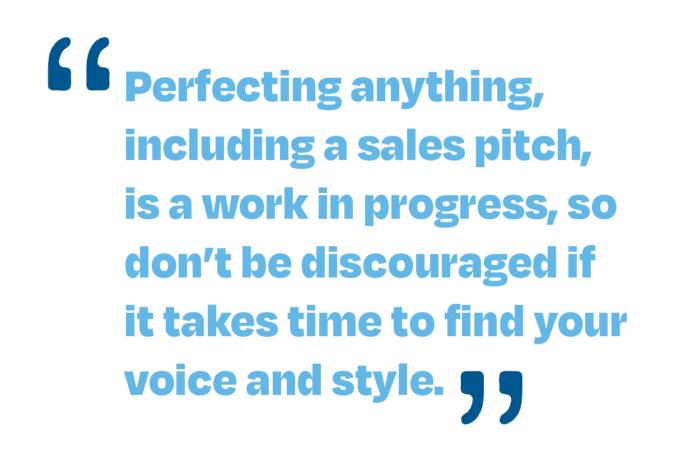Sales are essential to a business’s success. Without a proper and effective sales strategy, your business will struggle to grow and expand. But not many business owners know how to close sales effectively.

When salespeople focus only on their closing sales techniques, they put the cart before the horse. There are no “magic words” for closing a sale. Closing is only possible with a rock-solid sales plan from start to finish. That’s why we’re sharing how to close sales effectively, techniques for nurturing leads, and advice for standing apart from the competition. Now, you can restructure your sales strategy to support a closing offer at the right time, every time.
Start On The Right Foot.
It’s no secret many people find sales calls annoying and salespeople abrasive. This is likely due to standard closing sales techniques that salespeople use to manipulate potential buyers. These include, but are not limited to:
- Engaging in rude or pushy behavior
- Ignoring a client or prospect’s concerns about a deal
- Encouraging leads not to read the fine print within a contract
- Falsely promising benefits the product or service cannot provide
- Continuing to call or harass a prospect after being given a firm “no”
- Going over a potential buyer’s head after being told “no” and trying to involve their boss
As you can imagine, these closing sales techniques have left a bad taste in many people’s mouths. That’s why starting on the right foot is crucial before considering selling to a prospect.
But how do you do that?
Well, think about how you would want to be treated. How would you feel about conversing with someone you knew was only interested in getting into your wallet? You probably wouldn’t appreciate being treated that way.
In other words, when it comes to closing sales, techniques like this can do more harm than good. You might make the prospect even less likely to buy from you than if you hadn’t said anything to them.
That’s why we always recommend opening with friendly small talk. Try to get to know the person you speak to as an individual, not merely a lead. Here are some suggestions.
- See if you can find a shared hobby to discuss with the prospect.
- Ask about a prospect’s pets.
- Casually inquire about their weekend plans.
- Ask them about their favorite local restaurants and bars.
- Keep it simple — ask how their day was or is going.
By chatting with your lead before the sale, you take the pressure off the interaction and put everyone at ease. If you find common interests, you might also be able to build a relationship long-term. That could eventually bloom into great rapport and mutual respect even if the prospect never buys from you. When it comes to word-of-mouth marketing, connections like that are invaluable.
Listen Carefully.
Have you ever tried talking to someone you could tell wasn’t listening to you? Maybe they were on their phone while you were speaking, or all they wanted to talk about was themselves. Either way, you probably didn’t enjoy the experience.
If you want to know how to close sales effectively, you need to learn how to listen.
Everybody wants to feel heard, including your prospect. They don’t want to feel like you’re mowing over them or ignoring their needs. That’s why it is essential to ensure your leads know you are carefully listening to them and considering their needs.

One great way to do this is by restating their concerns. If they’re worried about pricing, you might say, “I understand you are concerned about pricing. We offer different packages at different prices so you can pick the best one for your business.”
Or suppose they worry about the waiting time for your services. In that case, you might say, “I understand you are worried about the wait time, and I can assure you I will do whatever I can to get you in as soon as possible.”
You won’t always be able to overcome the objections from every lead — and some people will be more skeptical than others. But you can always make sure your leads feel heard. They should feel like you’re there to help them with a problem, not just sell to them, which leads us to our next point.
Be The Solution.
When a lead tells you about a problem they are having with their business, this is called a “pain point.” Listen carefully to your customer’s pain points and show how your offering can solve their problems.
For example, let’s say you’re a farm supplies salesperson. Your lead is a potato farmer. He expresses how hard it is to move his fertilizer from one side of the farm to the other. He also says he wants to start using natural pesticides because he worries about chemicals running into his pond.

When you pitch buying a new tractor and some natural pesticides, you will want to phrase it as a solution to his problem. You want him to feel confident about his purchase and its ability to solve his current problems successfully.
Tailor Your Approach.
If you want to know how to close sales effectively, a “one size fits all” approach isn’t the way to go. After all, everyone is different and wants to be sold to in a comfortable way. Your approach should also account for your leads’ personality differences, communication styles, and tastes.
One way to do this is by considering your lead’s DISC personality (a profile measuring 4 traits: Dominance, Influence, Steadiness, Conscientiousness ). Are they more dominant? Conscientious? How do you even determine your prospect’s DISC style? You have to use cues from their communication to build a mental profile — the strategies you use to sell will vary based on their communication styles and values. If you take the time to get to know your lead a bit, you will better understand how to direct the conversation in a successful direction for sales.
Be Willing To Pivot.
Albert Einstein once said, “The definition of insanity is doing the same thing over and over and expecting different results.” While this applies to various areas in life, it also applies to sales. In other words, you need to switch things up if something isn’t working across the board.
If you’re confused about what’s going wrong and whether the issue is within your sales script, approach, closing sales techniques, or something else, then it might be worthwhile to go over your pitch with a friend. See if they can give feedback on where your pitch falls flat and what you can improve.
Once you have identified the issue, brainstorm ways to solve it. Test them on a friend or colleague and see what they find the most persuasive. Remember, different tactics might be more or less effective depending on the potential buyer’s personality, so don’t throw out a tactic entirely because it doesn’t work on a specific individual.
You can also consider how you would like to be sold to. Does your style mirror that? Are you too pushy, too agreeable, or lacking confidence? If so, you can practice your pitch in a mirror to try and perfect your demeanor and speech patterns to be as persuasive as possible.
Perfecting anything, including a sales pitch, is a work in progress, so don’t be discouraged if it takes time to find your voice and style. If you keep an open mind and adapt when necessary, you will be well on your way to becoming a selling pro.

Think Outside The Box.
Sometimes, conventional wisdom simply doesn’t work. You may have a specific sales formula or set of closing sales techniques that need to be corrected for the time, place, or audience you are trying to sell to. In those cases, it might be time to try something new.
Here are some suggestions for shaking up your sales process.
- Ask an unexpected or honest question. You can find some examples here.
- Give an unexpected (appropriate) compliment.
- Be honest about the products you would not personally recommend.
- Bring a small gift (unrelated to your product) for the prospect and give it to them, even if they decide not to buy.
- Tell a few (appropriate) jokes. This can help to ease the tension and make you appear more likable.
To be clear, we are not advocating that you act in a peculiar manner that makes people uncomfortable or ask rude or misguided questions. This is simply a toolkit to get out of your typical selling rut and add the element of surprise back into your interactions.
By being willing to take necessary risks and do something unconventional, you can stand out from other salespeople (in a good way) and create a more memorable experience for your leads.
Call In Back-Up.
Sometimes, it’s not enough to merely assert your product is the right solution to a prospect’s problem. Sometimes, you need to call in reinforcement: testimonials, success stories, and good reviews.

That’s why it’s always important to keep a record of any testimonials you receive from previous customers. The more detailed, the better. If you can manage to get some positive video testimonials or reviews, that’s even better.
You want your leads to see how your product has worked for others within their industry or niche. If possible, share testimonials from businesses similar to theirs that have seen great results from your products or services. You should strive to be as specific as possible.
Be Ready To Follow Up.
Some potential buyers are more cautious than others and will move through the sales funnel more slowly. Sometimes, this can take months or even years. You must be prepared with a consistent follow-up plan to ensure you stay in contact.
When you reach out, add value to the interaction. Calling them repeatedly and giving them the same pitch you delivered two weeks ago will not work. It will be annoying. Instead, reach out gently with new information if possible. You could ask if they would like to be added to your mailing list for exclusive offers or if they would like to learn more about the free educational resources you offer. Or you could just call to check in on how they are feeling about the original offer and chat for a while just to build rapport.
To be clear, you should never harass a prospective buyer who has given you a firm “no.” The above technique is only for interested leads who need clarification on their purchase. If you ever get a firm “no” from a prospect, respect it and leave the person alone. After all, you’re not going to get anywhere with someone by making them feel unheard and disrespected.
Consistency Is Key.
If you want to properly nurture your leads long-term, you must be consistent. One of the best ways to do this is through an email nurture campaign, where your prospects receive valuable free educational information every month they can use to improve their business. Delivery can be set up automatically so your team does not have to remember to send them.
You can also invite leads to subscribe to your newsletter or email newsletter so they hear from you in a more casual setting. They’ll be exposed to your entertaining content as well as your educational content, which can go a long way toward building a firm relationship with them.
When it comes to closing sales, techniques like the ones we discussed are absolutely essential.
When implemented properly, they ensure your lead’s needs are met and they leave your call feeling respected and often ready to buy. This is all a part of nurturing your potential buyers. Rather than push them into a sale they are not certain of, these closing sales techniques prioritize the quality of connection over the number of calls.

To learn more about how to close sales effectively through nurturing leads, you can fill out the form below to download our free Nurture Report. Chock-full of valuable expert sales information, this is an excellent resource if you are looking to supercharge your sales strategy and see unprecedented results.


Recent Comments